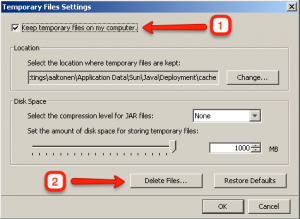This article was last updated April 2011.
Any time the kernel is upgraded, you’ll need to recompile and reinstall the drivers. As such, it is important to plan your kernel upgrades in advance and perform testing after the first boot using a new kernel.
If you are an IBM customer using IBM High IOPS adapters, please refer instead to the latest IBM documentation, drivers and firmware located at IBM Fix Central.
The 2.3.x driver builds and runs on a much wider range of kernels than the 1.2.x driver series. It accomplishes this using a new portability layer to abstract itself away from the operating system internals. By following the procedure below, you will obtain a working driver, built for the specific kernel running on your system.
Follow the instructions based on the version of your driver.
Building the Fusion-io Drivers From Source
To view a step-by-step screencast of this process, click here.
Before beginning, download the ioDrive driver source rpm for RHEL from the Dell Fusion-io support site to a temporary directory. At minimum, you’ll need the latest version of the following packages:
- fio-common
- fio-firmware
- fio-sysvinit
- fio-util
- iomemory-vsl
- libfio
Here’s a screenshot showing the packages that need to be downloaded.
Remove prior versions of the ioDrive driver rpm
yum remove iomemory* iomanager* iodrive* fio-* libfio* rm -rf /usr/src/redhat/RPMS/x86_64/iomemory-vsl-*
For Red Hat Enterprise 5, install the gcc 4.x and kernel-devel packages for your current kernel. The kernel-headers package is also needed, but is typically installed as part of the base operating system.
yum -y install kernel-headers-`uname -r` kernel-devel-`uname -r` rpm-build gcc lm_sensors net-snmp
Change to the directory where you downloaded the ioDrive driver source RPM and begin the rebuild process.
rpmbuild --rebuild iomemory-vsl*.src.rpm
Install the newly-built drivers.
yum install --nogpgcheck fio-sysvinit* fio-common* fio-util* libfio* fio-firmware* iomemory-vsl-source* /usr/src/redhat/RPMS/x86_64/iomemory-vsl-*
Check the status of the ioDrive(s):
fio-status Found 1 ioDrive in this system fct0 Attached as 'fioa' (block device) Fusion-io ioDIMM3 160GB, Product Number:FS1-001-161-ES SN:6168 Firmware v5.0.1, rev 42895 161 GBytes block device size, 198 GBytes physical device size capacity. PCI:0c:00.0, Slot Number:6 Internal temperature: avg 42.3 degC, max 44.3 degC Media status: Healthy; Reserves: 100.00%, warn at 10.00%
Upgrading the Fusion-io Firmware
In the previous section, you should have already downloaded and installed the latest firmware package. If not, you may download the fio-firmware package from the Fusion-io Support website to proceed. Once the firmware package is installed, it needs to be applied to the cards.
To upgrade the firmware:
fio-update-iodrive /usr/share/fio/firmware/iodrive_*.fff
Watch the output of the upgrade process and reboot when complete.
Update the Fusion-io Init Scripts
Uncomment the blacklist line:
vim /etc/modprobe.d/iomemory-vsl.conf
# To keep ioDrive from auto loading at boot when using udev, uncomment below blacklist iomemory-vsl
Backup /etc/fstab, and modify it to add “noauto 0 0” to the datavg filesystems:
cp /etc/fstab /etc/fstab.`date +%Y%m%d.%H%M%S` vim /etc/fstab
Example:
/dev/datavg/u2 /u2 ext3 defaults,noauto 0 0 /dev/datavg/eclipse /u2/eclipse ext3 defaults,noauto 0 0 /dev/datavg/edi /u2/edi ext3 defaults,noauto 0 0 /dev/datavg/ereports /u2/eclipse/ereports ext3 defaults,noauto 0 0 /dev/datavg/pdw /u2/pdw ext3 defaults,noauto 0 0 /dev/datavg/uvtmp /u2/uvtmp ext3 defaults,noauto 0 0 /dev/datavg/kourier /u2/kourier ext3 defaults,noauto 0 0 /dev/datavg/crashplan /usr/local/crashplan ext3 defaults,noauto 0 0
Uncomment “ENABLED=1” in /etc/sysconfig/iomemory-vsl to enable init script:
vim /etc/sysconfig/iomemory-vsl
# If ENABLED is not set (non-zero) then iomemory-vsl init script will not be # used. ENABLED=1
In the same /etc/sysconfig/iomemory-vsl file, add the RAID array(s) and mount points. For example:
MD_ARRAYS="/dev/md0" LVM_VGS="/dev/datavg" MOUNTS="/u2 /u2/edi /u2/eclipse /u2/eclipse/ereports /u2/pdw /u2/uvtmp /u2/kourier /usr/spool/crashplan"
Enable the init script:
chkconfig iomemory-vsl on chkconfig --list iomemory-vsl

